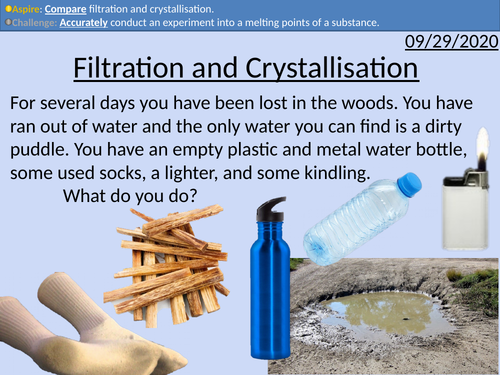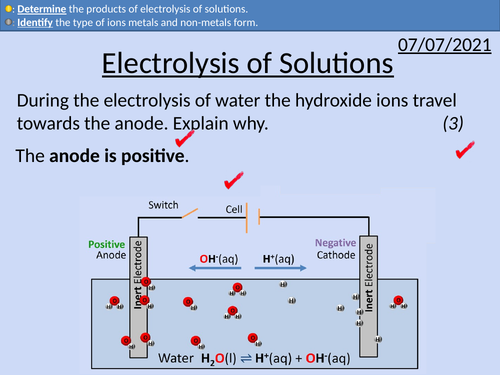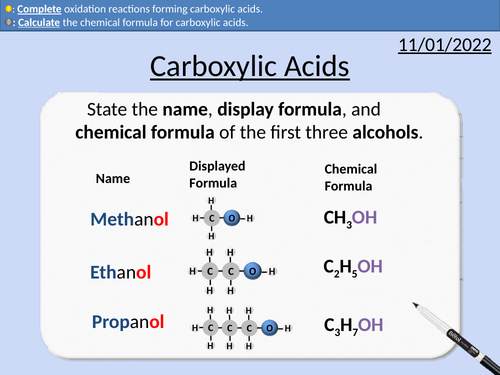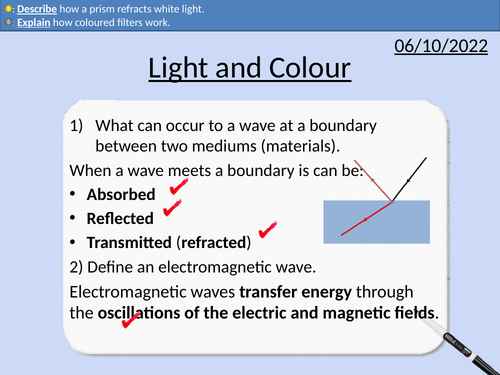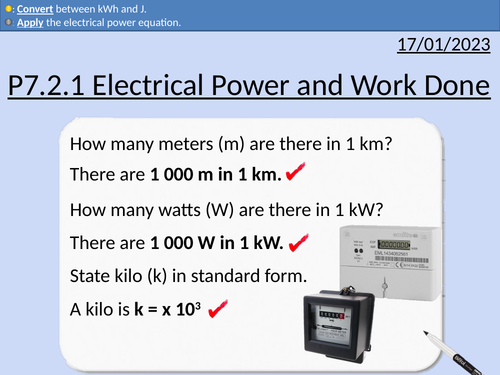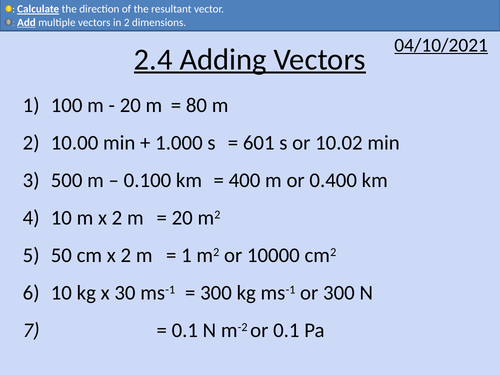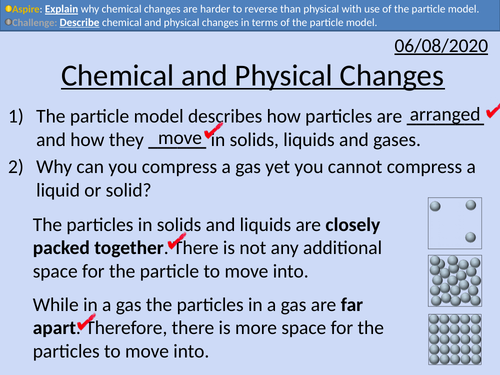484Uploads
144k+Views
63k+Downloads
All resources

GCSE Chemistry: Isotopes and Ions
This PowerPoint presentation with worked examples and student questions covers:
• Definitions of elements, isotopes, and ions
• State mass number, atomic number, and chemical symbols
• Calculate the number of neutrons

GCSE Chemistry: Filtration and Crystallisation
This PowerPoint presentation with worked examples and student questions covers:
Definitions for solution, solute, solvent, insoluble, soluble.
The technique of filtration
The technique of crystallisation

GCSE Chemistry: Electrolysis of Solutions
This PowerPoint presentation with worked examples and student questions covers:
• The position of metals and non-metals on the periodic table
• The ions metals and non-metals form
• The ion composition of solutions
• Electrodes, cations and anions
• The products of electrolysis of solutions
• Keyword descriptions and revision tips

GCSE Chemistry: Carboxylic Acids
This PowerPoint presentation with worked examples and student questions covers:
• Functional groups of carboxylic acids, alcohols, alkanes, and alkenes.
• Mnemonic device for naming carboxylic acids
• General formula for carboxylic acids
• Drawing the structural formula for carboxylic acids
• Carboxylic acids as weak acids and
• Acid reactions with bases, metals, and carbonates
• Oxidation reactions from alcohols to carboxylic acids

OCR AS Physics: Diodes
OCR AS Physics A: Diodes is a part of the Module 4: Electrons, Waves, and Photons. PowerPoint with worked examples and homework.
Polarity of diodes
Conventional current and diodes
Plotting I-V curves for diodes
Describing I-V curves for diodes

OCR AS Physics: Combining Resistors
OCR AS Physics A: Combining Resistors is a part of the Module 4: Electrons, Waves, and Photons. PowerPoint with worked examples and homework.
Rules for adding resistors in series and parallel
Applying adding resistors in series and parallel

GCSE Physics: Light and Colour
This presentation covers OCR Gateway Physics 9-1 P5.3.3 Light and Colour
Includes student activities and full worked answers.
Names of colours for the visible spectrum
Coloured filters
Coloured objects acting as a coloured filters
White light and refracting prism
Refraction and wavelength
Specular reflection
Diffuse scattering
Scattering - Why the sky is blue and milk is white.

GCSE Physics: Electrical Power and Work Done
This presentation covers OCR Gateway Physics 9-1 P7.2.1 Electrical Power and Work Done. All presentations come with student activities and worked solutions.
Definition of power
Converting between W and kW
Converting between seconds, minutes, and hours
Calculating work done in kWh and J
Converting between kWh and J

GCSE Physics: EM waves - Uses and Dangers
This presentation cover the OCR Gateway Physics 9-1 P5.2.2 Uses and Dangers of EM radiation. PowerPoint includes student activities with full worked answers.
Recall that light is an electromagnetic wave
Give examples of some practical uses of electromagnetic waves in the radio, micro-wave, infra-red, visible, ultraviolet, X-ray and gamma-ray regions
Describe how ultra-violet waves, X-rays and gamma rays can have hazardous effects, notably on human bodily tissues.
Explain that electromagnetic waves transfer energy from source to absorber to include examples from a range of electromagnetic waves
Precautions for ultra-violet waves, X-rays and gamma rays

GCSE Physics: Electrostatics
This presentation covers OCR Gateway Physics 9-1 P3.1.1 Electrostatics
Subatomic particles and electric charge
Transfer of electric charge
Attraction and repulsion from electric charge
Electric field lines
Interaction of electric field lines
Van der Graff generator

GCSE Physics: Resistance and Ohm's Law
This presentations covers the OCR Gateway Physics 9-1 P3.2.3 Resistance
Combining resistors in series
Combining resistors in parallel
Modeling resistance, current, and potential difference with a rope.
The relationship between potential difference and current
The relationship between resistance and current
Ohm’s law
Rearranging equations
Worked examples and student questions
Explaining how increasing current increases resistance in a metal conductor and filament lamp.

GCSE Physics: Magnets and Magnetic Fields
This presentation covers OCR Gateway Physics 9-1 P4.1.1 Magnets and Magnetic Fields.
Rules for repulsion and attraction
Magnetic Field Line Rules
Magnetic field density and magnetic force
Modeling the Earth as a Bar Magnet
Permanent and Induced Magnets
Magnetic Domains

GCSE Physics: Distance, Time and Speed
This presentation covers material for OCR Physics Gateway 9-1 P2.1.1
Covered:
Measuring and calculating
Accuracy of stop watch vs light gate
Conversion of units
Exam style question
Worked examples
Students questions with answers

OCR AS level Physics: Current and Charge
OCR AS level Physics: Current and Charge is a part of the Module 4: Electrons, Waves, and Photons.
Presentation come with worked examples, solutions and homeworks.

OCR AS level Physics: Derived Units
OCR AS level Physics: Derived Units is a part of the Module 2: Foundations of Physics
Full lesson PowerPoint with worked examples and homework with complete worked answers.
Indices Notation
Converting from Celsius to Kelvin.
Determining base units from derived units.

OCR AS level Physics: Adding Vectors
OCR AS level Physics: Adding Vectors is a part of the Module 2: Foundations of Physics
Full lesson PowerPoint with worked examples and homework with complete worked answers.
Adding vectors in 1 D
Adding vectors in 2 D
Vector triangles
Using Pythagoras’ theorem to determine the magnitude
Using trigonometry to determine the direction

OCR AS level Physics: Equations of Motion
OCR AS level Physics: Equations of Motion is a part of the Module 3: Forces and Motion
Presentation come with worked examples, solutions and homeworks.

OCR AS level Physics: Einstein's Photoelectric Equation
OCR AS level Physics: Einstein’s Photoelectric Effect Equation is a part of the Module 4: Electrons, Waves, and Photons.
Full lesson PowerPoint with worked examples and homework with complete worked answers.
The photoelectric equation
Work function and Kinetic Energy
Determining work function from a graph
Determining threshold frequency from a from graphical analysis.
Determining Plank’s constant from graphical analysis.

GCSE Chemistry: Chemical and Physical Changes
This PowerPoint presentation with worked examples and student questions covers:
• Differences between physical and chemical changes
• Explain why physical changes are generally easier to reverse

GCSE Chemistry: Pure and Impure Substances
This PowerPoint presentation with worked examples and student questions covers:
Definitions of pure and impure substances
Definition of an alloy
Identification of purity with melting points
Plotting graphs and data analysis


